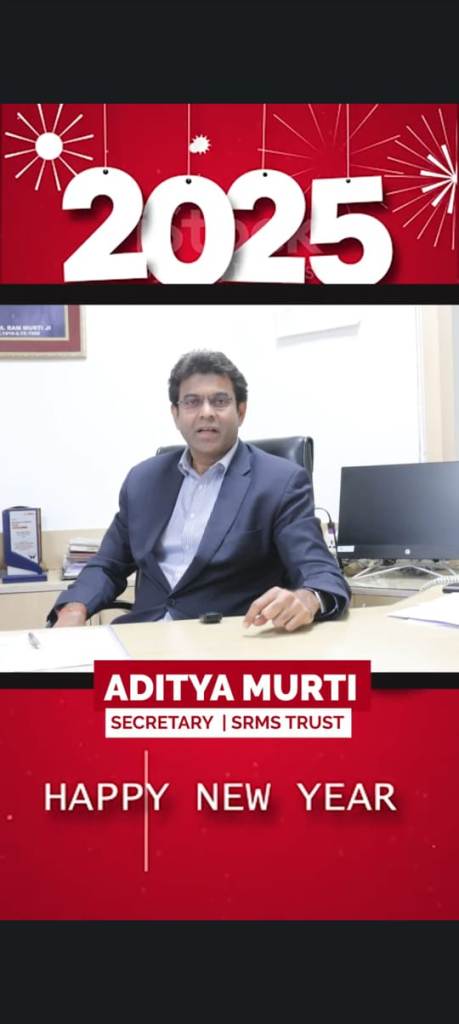SRMS CET’s formidable pool of teachers- dipped in Research and Development Programs to enhance classroom experience for students

About The Faculty
| Name | Prof. Laxmi Shanker Maurya |
| Designation | Associate . Professor and HOD – Department of CS & IT |
| Qualification | B.Tech (1995) in Computer Engineering from Govind Ballabh Pant University of Agriculture and Technology, Pant Nagar M.Tech IT from Allahabad Agricultural Institute MBA (2010) from IGNOU PhD scholar, Mewar University, Chittorgarh, Rajasthan |
| Experience prior to SRMS CET | 2.5 years as Teaching Assistant at College of Technology, Pant Nagar University |
SRMS CET was two years old when Prof. Laxmi Shanker Maurya started his journey with the B-school. It wouldn’t be wrong in any way to say that Prof. Maurya played a very critical role in the growth of the department and the various labs and facilities that are now integral parts of SRMS CET, Bareilly. He has witnessed most of the transition of the institute from its nascent stage to where it is now.
Over a coffee conversation, we asked Prof. Maurya about the highs and lows of the school and how it is slowly becoming a force to reckon with among students in pursuit of a sound education.
“It isn’t only the students that are learning. We get ample opportunities to polish our skills as well”
Not a week goes by when the faculty at SRMS CET are not attending important seminars, workshops, researches or FDPs. Prof. Maurya picked from his own experiences and listed down various courses he attended of late. Topping his chart is the course he underwent sponsored by Tata Consultancy Services in software engineering. Thereafter, he has undergone a two-week short-term course in Faculty Development Program (FDP) on computer science with industry perspective in Infosys, Pune. The two-week programme sponsored by CDAC Centre for Development in Advanced Computing has been another major eye opener. Prof. Maurya also mentioned the interesting one-week programs sponsored by National Institute of Technical Teachers Training and Research, Chandigarh on the subject of cyber security and forensic science and wireless networks, respectively in 2016 and 2017, among many others.
“While institutes assign faculty members with tight teaching hours, at SRMS CET we are encouraged to think creatively and engage in meaningful Research”
Prof. Maurya shares, “As far as the research exposure is concerned, my PhD topic itself is in the domain of software engineering. In the research duration of six years, I’ve published four research papers in international journals. I’ve also attended two international conferences, one in SRM University, Modi Nagar and the other one in Indian Institute of Technology, Banaras Hindu University, Varanasi.” , the faculty pool at SRMS CET are given enough time to analyse, understand, and gather new information and dip their hands in practicing the latest tools. As a result, they continue to stay relevant in the classroom.
“IT classroom sessions have the risk of getting drab at times. We try implementing techniques to keep them as interesting as possible.”
Computer Science faculty have a particularly challenging time due to the constant change in technologies and software. Speaking of his experience, Prof. Maurya says, “So many changes have happened in this field since I was a B.Tech. student and even since I joined in 1998. Therefore, keeping up-to-date is critical for me. I try to devote time to developing a strong understanding of the advanced languages and the database management system so that I can more effectively pass on my knowledge to the students.”
Again, picking from his own way of structuring classroom sessions, Prof. Maurya mentions that he is a member of the Computer Society of India, which has more than 70,000 members. This helps his to have a board for issues. He also relies on the monthly CSI communication magazine that details the latest technological trends, the e-groups on technological aspects, and the converging e-portals of SRMS CET faculty members, to name a few.
“At SRMS CET, we encourage an open-door policy when it comes to student-faculty interaction”
A four-year long B.Tech programme or even a two-year M.Tech is a long enough time for faculty and students to develop personal and professional bonds. This lasts beyond graduation as faculty stays in touch with alumni, as well through initiatives like alumni lectures and other means. SRMS CET also invites the students in the industry to help guide the current batch of students.
Apart from teaching, faculty gets involved in other areas of development as well. The student clubs at the departmental level have a team of students and one faculty co-ordinator. The responsibilities of clubs like IT, Tiro and Equinox is to conduct workshops and seminars, and to discuss the latest technological developments in order to develop students’ technical understanding and communication proficiency.
In this way, faculty members are involved in complete development of a student’s technical, team, and leadership skills.













